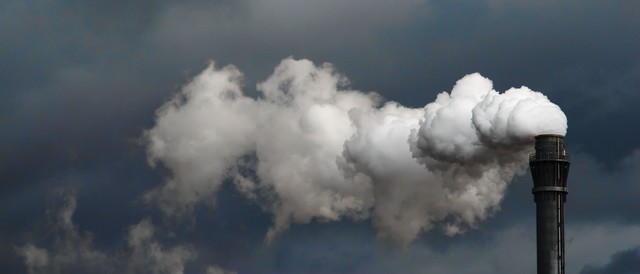In the late 1970s, the first major protests against nuclear power had already taken place in Whyl and Brokdorf. Perhaps no other publication better reveals what the arguments against nuclear were back then than the original book Energiewende. Craig Morris was mainly surprised at the early focus on overall efficiency.

Often neglected, yet part of the solution: higher efficiency. (Photo by Dirk Duckhorn, CC BY-SA 2.0)
In the late 1970s, at a time when German politicians were claiming that, without nuclear, the lights would go out, the authors of Energiewende said that electricity (the only thing that nuclear produces) is not the problem: “Germany’s energy problem is how we will get affordable heat and fuels in the future. No wonder that the citizens of our country are not so worried about the lights going off next winter but are more concerned about heating their homes and filling up their cars.” And even today, everyone continues to talk about the rising cost of electricity even though the price of oil and gas continues to rise much faster.
Repeatedly, the authors argued that nuclear remains marginal, though tons of money has been thrown at it: “20 years (and 20 billion marks in tax money) later, Germany now has a small fleet of nuclear plants that cover only 10 percent of power supply and only two percent of final energy consumption.… We would be just as well off (or not) without any nuclear power.”

Now that Germany has so much renewable power, it is clear that there will be no need for any baseload (and hence, none for nuclear) by the end of this decade.
Of course, renewables have also benefited from quite a bit of startup funding (though from ratepayers, not taxpayers, in Germany), so you might think the situation changed a bit over the years. And indeed, nuclear made up roughly a quarter of German power demand before the sudden nuclear phaseout of 2011.
Nonetheless, nuclear remains unbankable, as the recent associations for price guarantees for new nuclear in the UK demonstrate. In contrast, wind and solar continue to get cheaper, with wind already competitive with wholesale power – and solar competitive with retail power rates. Likewise, after the 2011 nuclear phase-out decision, there were once again charges that the lights would go out in Germany, in reality 2012 German power exports reached a record level.
Back in the late 1970s, the authors believed that renewables and domestic coal in combination with efficiency provided an alternative. They were quick to point out that “we are not calling on people to lower their standards of living.” Rather, not enough attention was paid to efficiency: “… current energy planning is dominated by economists, who are trained to assume a certain level of energy consumption related to economic events rather than to study the many ways that individual applications consume energy.” And indeed, I never tire of pointing out that Germans now tend to think like engineers, not economists.
Most of all, though, the authors said that nuclear is incompatible with high levels of efficiency, which could come from relatively small, distributed cogeneration units – even when fired by coal. The main problem for nuclear towards this goal is that no one has ever found a way of using the waste heat from nuclear plants productively. This study from 1980 speaks of various process heat applications from nuclear waste heat, none of which has come to pass.
Yet, that’s not what we are concerned about today. Aside from risks, nuclear power is considered incompatible because the plants do not ramp up and down well, which is what intermittent solar and wind will need. In my next blog post, I wrap up this reading with a look at whether this strategy proposal from 1980 – renewables in combination with coal – is still defensible today.
Craig Morris (@PPchef) is the lead author of German Energy Transition. He directs Petite Planète and writes every workday for Renewables International.
[…] didn’t simply fall from the sky in 2011. “Discussions about Energiewende had started already in the 1980s“, says Fischedick. “There is a long tradition here in talking about alternative energy […]
The premise is wrong. Nuclear power stations can and do provide district heating. They used to do so in the DDR Germany before its annexation. Existing installations continue to operate in Russia (where the practice may expand in coming years), several other Eastern European countries, and in Switzerland where the world’s oldest operating nuclear plant Breznau pipes “waste” heat to eleven different nearby towns.
http://en.wikipedia.org/wiki/District_heating#District_heat_from_combined_heat_and_power_or_simple_combustion
@Jonathan: Problems with nuclear plants’ waste heat are:
– TOO MUCH – there is no rational use of 2 GW constant heat supply from 1 GW reactor. There is a “thumb” rule saying 1 MWt = peak heat supply for 1000 people but it is about 30-40 years old rule. Central heat suppliers in CZ with 30-40 year old CHP plants have now problems with huge overcapacity.
– TOO FAR – you can’t build a nuke anywhere as I know there are f.e. just four possible sites in CZ. But the distance of transportation is a killer. When you have to transport heat more than say 30-40 km than it is too costly even if it is produced for free and whatever happens (broken pipes, heat exchange stations, CHP plant) cuts whole cities out of heat.